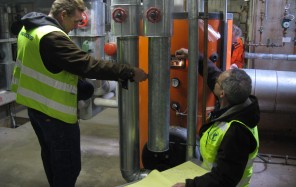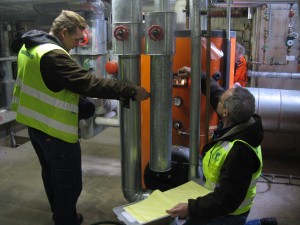How to Perform a Building Energy Audit

Building energy audits can be performed on commercial and industrial buildings to assess the amount of energy currently being used and assist in prioritizing and implementing energy-efficiency projects. Energy audits use a variety of techniques to evaluate energy efficiency and identify potential efficiency improvements to lower utility bills and increase comfort. Energy Star rating is just one method of establishing a comparative baseline of the energy usage of a building. Energy audits will assist building owners and property managers in identifying ways to help lower operating costs and create a more competitive position for their building in the real estate market.
Energy audits can be obtained at no cost to the building owner and at a minimum should include a review of the building envelope and building operations.
Typical energy audit reports will include similar recommendations in the following areas:
- Building Envelope and Building Operations
- Lighting Systems
- Occupancy sensors for lighting in amenity areas
- Heating and Cooling
- Scheduled start and stop of HVAC equipment and lighting
- Water Heating
- Reset boiler hot water temperatures based upon outside air temp
- Lower domestic hot water temp to 120 degrees
- Energy Management Systems and Controls
- Repair/ Replace defective zone control valves
- Controls to lock out central cooling below 50 degrees
- Controls to lock out central heating above 65 degrees
- Set space temperatures during unoccupied times up to 85 degrees/ set back to 65 degrees at night
- Annual Maintenance
- Changing filters, cleaning coils and cleaning tubes/duct-work
- Heat Recovery Operations
Sample Energy Audit Recommendations
Low Cost/ No-Cost Energy Conservation Measures
- Install Programmable thermostats
- Insulate interior hot water pipes
- Install photocell control of parking lot and exterior lighting
- Global Control for computer monitors “off” after 15 minutes of inactivity or at night
Retrofit or Upgrade at next replacement cycle
- Evaluate potential savings for alternate Power Systems – Variable Frequency Drives
- Install low flow faucets, and toilets
- Install higher efficiency heating or cooling systems
- Increase roof insulation
- Evaluate window replacement
- Replace higher efficiency lighting in common areas, exit lighting and stairwell lighting
Higher efficiency lighting in room areas, especially to replace incandescent bulbs
Get Going
- Take advantage of DOE’s Energy Star – energy benchmarking software to easily get started and help you establish priorities.
- Contact a deregulated energy broker in your area and request a free energy audit
- Contact your local utility company and request a free energy audit
- Review, prioritize and assign energy conservation measures and energy efficiency measures to ensure all high impact ROI and Low Cost projects are assigned and implemented first.
Contact your local energy broker to provide a list of all available energy rebates and tax incentives.





